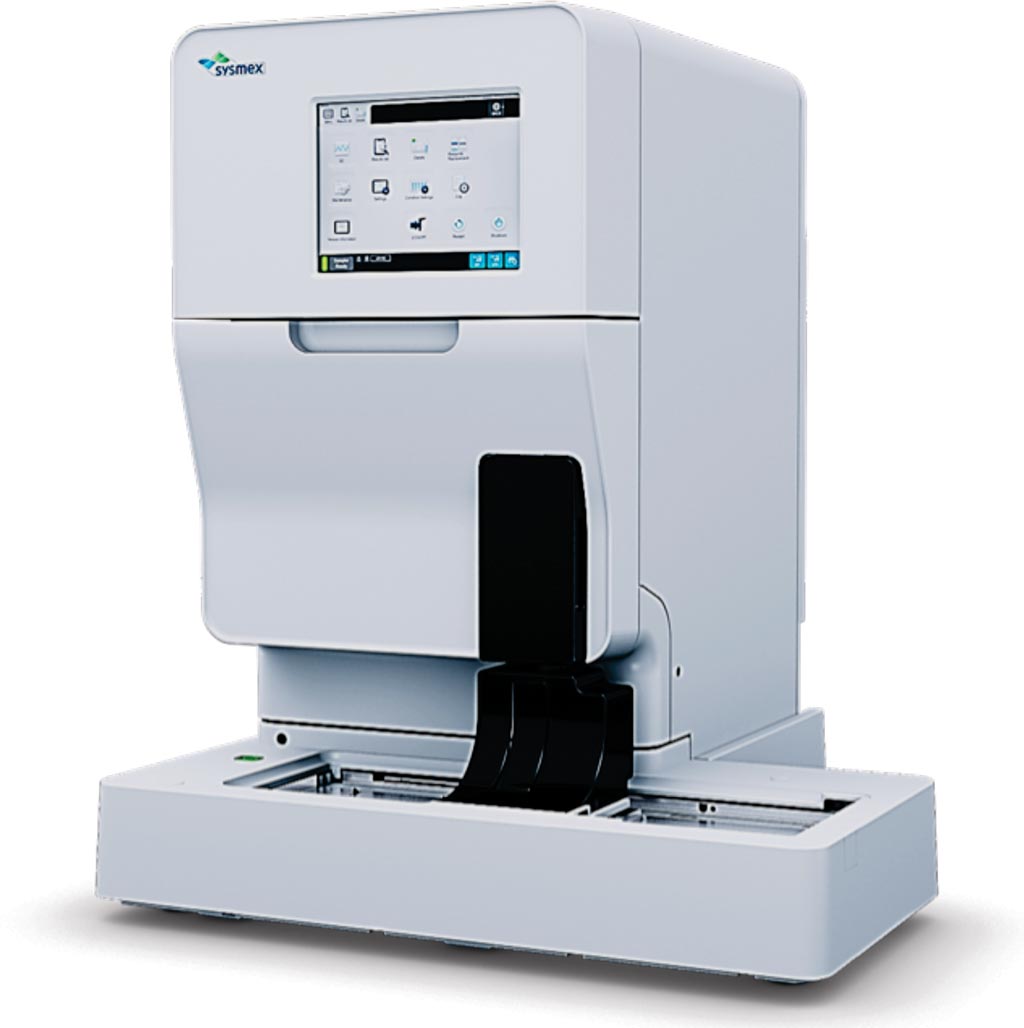New Urine Analyzer Evaluated for Performance
By LabMedica International staff writers
Posted on 03 Oct 2017
Urinalysis is one of the most commonly requested laboratory tests, the third after the biochemical profile and the blood cell count, and it is very useful to screen for diseases of the kidney and urinary tract.Posted on 03 Oct 2017
Microscopic evaluation of the sediment particles is a time consuming procedure, with high imprecision and inaccuracy; furthermore, it requires expert knowledge and it is strongly influenced by the inter-observer variability. In recent years, automation of urinary sediment has overcome these limits.

Image: The UF-5000 fully automated urine analyzer (Photo courtesy of Sysmex Europe).
Clinical chemists at the Papa Giovanni XXIII Hospital (Bergamo, Italy) selected 736 fresh, first morning, clean catch mid-stream urine samples from the samples sent to the Clinical Chemistry Laboratory during the period May–October 2016. Samples were selected in order to cover all the linearity range for all the parameters where possible; analyses concentrations were distributed over the analytical measurement range of the urine analyzer.
Each sample was sequentially analyzed on the Aution Max AX-4280 automated urine test strip analyzer and the Sysmex UF-1000i. The new analyzer evaluated was the Sysmex UF-5000 which is able to recognize, count and classify cells by analyzing forward scatter light (FSC), side scatter light (SSL), side fluorescent light (SFL) and depolarized side scattered light (DSS). DSS was introduced to improve the sensitivity of crystals and to better discriminate the red blood cells and crystals. For the comparative method, Fuchs-Rosenthal chamber (FRC) counting with a phase contrast microscope using an eyepiece set at ×10and a lens set at ×40, for a total of ×400, was used as a reference manual method.
The scientists reported that the AUC of ROC curve ranged between 0.86 and 0.99. Sensitivity was greater than 90% for all the elements and similar for red blood cells (RBC) and yeasts. Specificity ranged between 74% and 89% for total cast, epithelial/non-squamous/renal-tubular cells and RBC. For all the other parameters specificity was greater than 90%. Comparison with Fuchs- Rosenthal chamber was very good for all the parameters except for pathological cast because of the lack of the pathological samples in medium and higher ranges.
The authors concluded that their study assessed the newly introduced UF-5000 which they found is a really simple, useful and accurate analyzer to detect urine particles related to the pathological process of kidney and urinary tract. All the parameters showed a high negative predictive value (NPV), so it is possible to exclude the presence of a disease with a great probability when a urine sample is negative.
On the other hand, the robust statistical analysis observed for all the parameters, especially those with an important clinical impact and higher than the ones obtained by image-based analyzers, makes UF-5000 an analyzer of great interest, recommended in routine practice, also for complex case mix laboratory. The study was published in the September 2017 issue of the journal Clinica Chimica Acta.
Related Links:
Papa Giovanni XXIII Hospital













